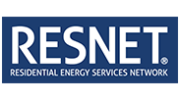
10 Home Insulation Terms Homeowners Should Know
Homeowners, we understand insulation terminology can be intimidating. This is especially unnerving when there’s an issue with your home and you need to call a professional to come assess the situation. It’s easy to feel as though you might be scammed when you’re not exactly sure what the company is referring to, but hang tight. We’ve compiled a list of the top ten home insulation terms homeowners and potential homeowners should know going into 2022.
Fiberglass Insulation
Fiberglass insulation is composed of plastic and glass fibers and a chosen home insulation material because of its non-combustible nature. Fiberglass is typically used in attics, rim joists, and open walls. Fiberglass insulation is the most commonly used insulation on the market today.
Cellulose Insulation
Cellulose insulation is primarily formed through recycled paper products, making it a preferred choice of home insulation for those who are more mindful of their environmental impact. Cellulose is most commonly found in attics, roofs, and ceilings. It can also be blown into exterior walls.
Foam Insulation
Foam insulation comes in the form of foam board or spray foam insulation, both provide a high level of thermal resistance and a moisture barrier. It is a preferred material for home insulation because it can fit in small and hard-to-reach spaces. For more information on spray foam insulation, check out our blog here.
R-Value
The r-value is the rating given to home insulation materials on how well they’re able to maintain heat from traveling from one side of the insulation to the other. This is imperative to keep your attic, basement, and rooms of your home well-heated in the winter and cool in the summer. The higher the r-value, the better the material is for thermal resistance.
Energy Codes
Energy codes are insulation requirements for residential and commercial spaces as defined by the government. This assists in making sure builders use efficient home insulation materials to correlate with energy costs. Check out the NC Building Codes here.
Exterior Walls
Exterior walls are those of your home which directly touch the outside of your home. These walls need the highest level of insulation in order to protect your home against extreme weather and moisture.
Foundation Walls
Foundation walls are predominately made from concrete and masonry. It is vital to insulate these walls because they directly transfer cold air/moisture from underground into your basement and floors.
Rim Joists
Rim joists provide lateral support to floors and decks. When these joists are not properly insulated, air and moisture can easily pass through which affects the internal environment of your home.
Weatherstrip
A weatherstrip helps seal parts of a home that are moveable, such as windows and doors. Weatherstrips add a layer of insulation and can act as a moisture barrier. If you’re feeling a draft from windows or exterior doors, weatherstrips are often a quick and inexpensive fix to better insulate your home.
Vapor Barriers and Vapor Retarders
Vapor barriers and vapor retarders both work on moisture control. The permeability level distinguishes whether the material is classified as a barrier or a retarder. Permeability levels less than one are classified as vapor barriers and permeability levels one through ten are distinguished as vapor retarders.
At MPI Foam, we seek to help our clients understand home insulation better. If you have any questions, please give us a call at 844-MPI-FOAM!




Share This